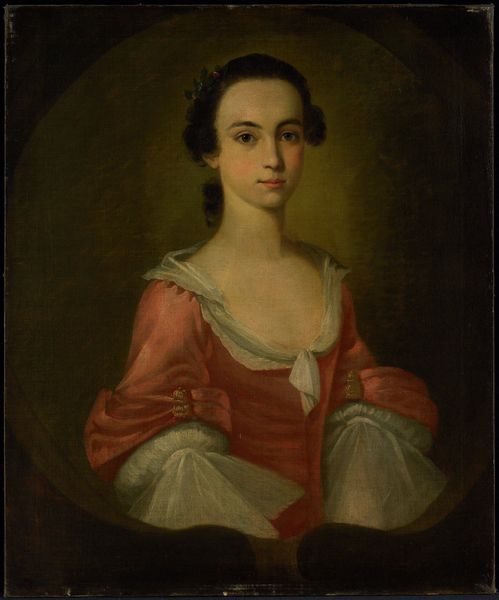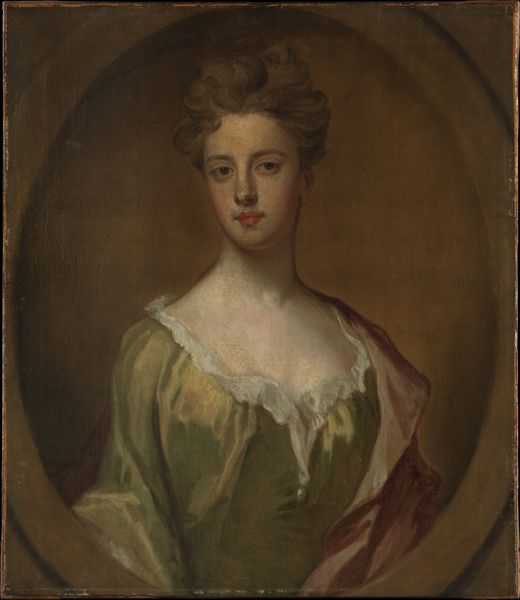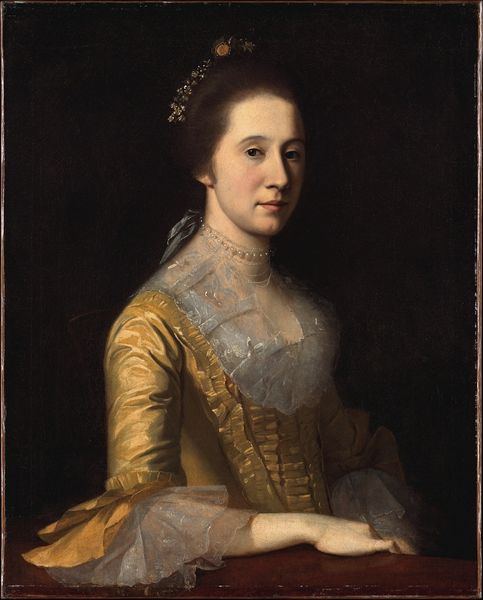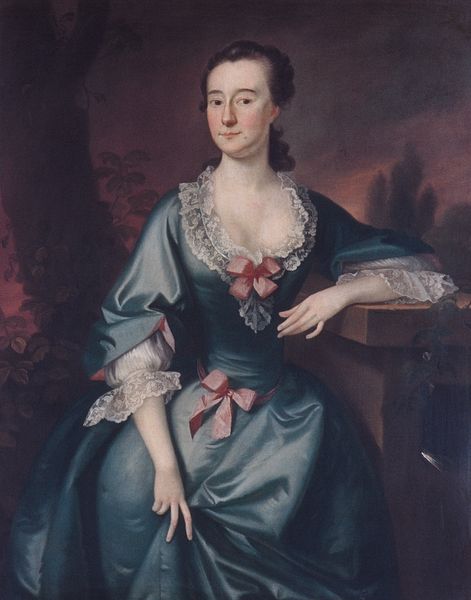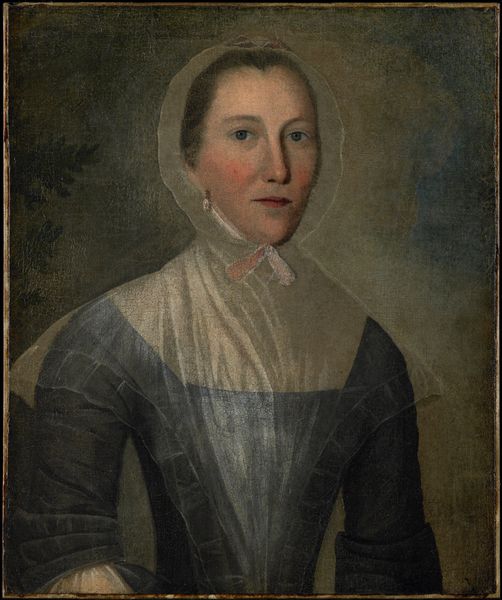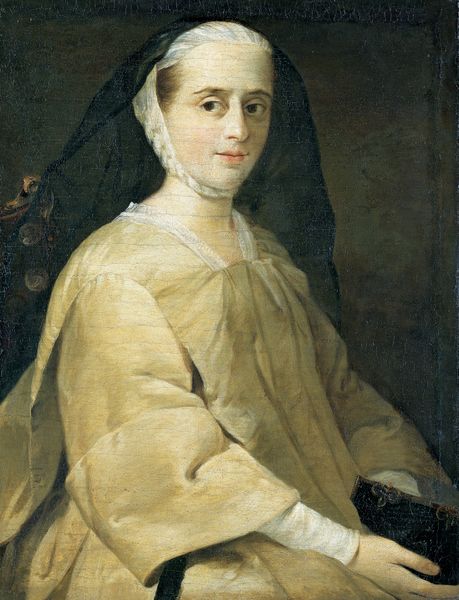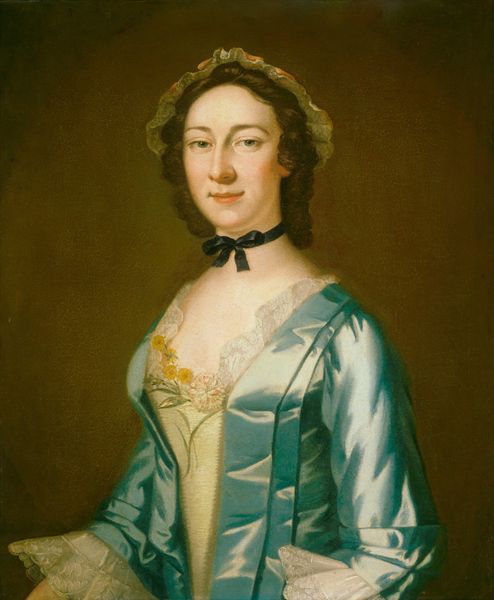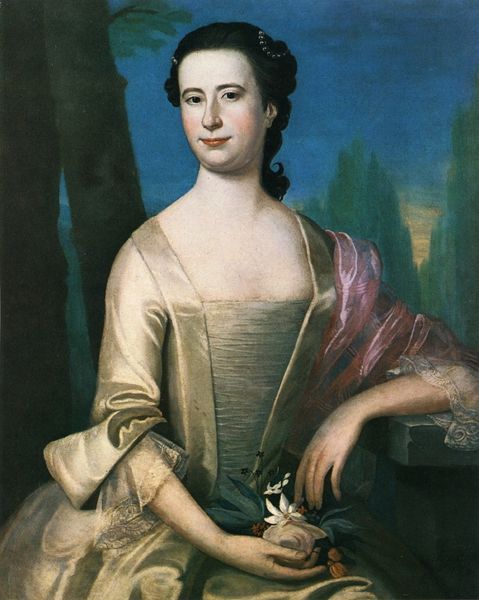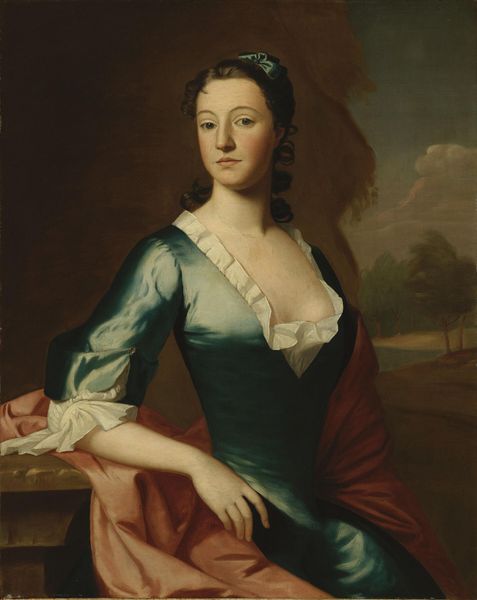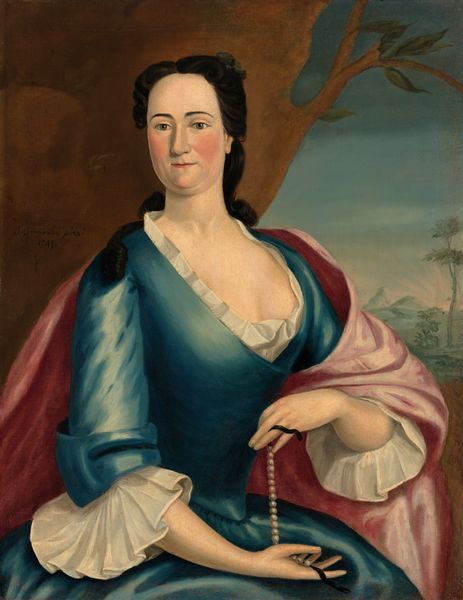
Dimensions: 30 x 25 in. (76.2 x 63.5 cm) (canvas)29 1/2 x 24 5/8 in. (74.93 x 62.55 cm) (sight)37 x 32 3/8 x 2 3/8 in. (93.98 x 82.23 x 6.03 cm) (outer frame)
Copyright: Public Domain
Curator: Here we have Jeremiah Theus' "Portrait of Marcy Olney," painted around 1771, and residing here at the Minneapolis Institute of Art. Editor: The luminous quality strikes me first. Despite the dark background, she positively glows! What do you make of this? Curator: I'm fascinated by the textile details – the way the light catches the silk of her gown and the texture of the lace trim. You can almost feel the layers of fabric she's wearing. Rococo portraiture certainly emphasized that luxury in the early American colonies, highlighting how the process of crafting those fabrics carried cultural weight. Editor: Indeed! Beyond the fabric, the pearls encircling her neck speak of status, refinement, and the aspiration to gentility. The placement of the jewels is very intentional. Three strands suggesting youth, maybe an illusion since we know the sitter died only nine years later? Curator: Absolutely. The creation and display of such an expensive necklace speak volumes about social position and the colonial economy dependent on exploitation. This was a society where materials broadcast your worth, linking consumption to colonial structures. Editor: And Marcy’s gaze, soft and somewhat demure, reinforces the conventions of female portraiture at the time, signifying virtue and domesticity, very specific role prescribed by colonial America. Notice her right hand and fingers placed just at the lower part of the torso: isn’t there a universal symbol being projected to signify the fertility or marital bliss through this iconography? Curator: It's intriguing to consider how her image was intentionally constructed to uphold those values and power structures, with clothing itself and carefully arranged pose all contributing to the narrative, as much as Theus’ choices around color. Editor: Right, she exists both as an individual and a signifier. It is always hard to see this distance, imposed distance on people represented in these pictures and their long-gone environment… Well, thank you! Curator: And thank you. Considering how artists shaped perceptions of individuals through the labor of making materials and then a portrait has shifted my viewpoint.
Comments
No comments
Be the first to comment and join the conversation on the ultimate creative platform.
